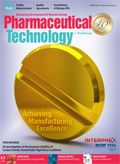Operational Excellence at Baxter BioPharma Solutions
Pharmaceutical Technology spoke with Frank Generotzky, plant manager for Baxter BioPharma Solutions’ Halle, Germany facility, about operational excellence at the site.
The Baxter BioPharma Solutions (BPS) Oncology manufacturing expansion project at its Halle, Germany location was the winner of the Operational Excellence category of the 2016 International Society of Pharmaceutical Engineering (ISPE) Facility of the Year Awards (1). The company applied lean manufacturing principles in designing the expanded facility. The flexible design with adaptable equipment gave the company the ability to have rapid changeover to manufacture a wide variety of liquid formulations. Pharmaceutical Technology spoke with Frank Generotzky, plant manager for Baxter BioPharma Solutions’ Halle, Germany facility, about operational excellence at the site.
Keys to success
PharmTech: How would you define manufacturing excellence or operational excellence for the pharma industry, and what are the keys to achieving it?
Generotzky (Baxter): The pursuit of operational excellence is an ongoing goal driving improvement. Operational excellence leads to continuous improvement to increase efficiency as well as capacity while maintaining high quality and client satisfaction. Some examples of methods include:
- An innovative facility layout optimized using a ‘form follows function’ concept, designed and planned utilizing visualization tools for processes and parameters
- Optimal equipment design defined by using simulation models for critical process steps (e.g., mock-ups, computational fluid dynamics, 3-D simulation models)
- An experienced project team that accompanies all phases from design and validation through routine operation.
PharmTech: What programs have you found to be successful?
Generotzky (Baxter): It is important to implement programs where all employees are involved (from operator to manager) to enhance success. Creating an uplifting experience for the employees by implementing programs internally such as 5S and process visualization helps to pave the way for the implementation of more complex systems such as operational equipment effectiveness or SixSigma. At the end of the day, success is dependent on having the necessary tools (e.g., a value stream map being supported, for example, by failure mode and effects analyses, fishbone diagrams, and standard control charts). Additionally, statistical tools should be leveraged in order to determine variation signals early in the process so that countermeasures can be implemented in a timely manner.
PharmTech: What aspects in particular of lean manufacturing have been most beneficial?
Generotzky (Baxter): Applying 5S in manufacturing areas and increasing the time that managers are on the floor (‘Gemba Time’) can help ensure a high degree of standardization and discipline. Continuous measurement of process parameters with standard control charts and statistical evaluation leads to continuous improvement of yield and reduction of process deviations.
Standardization and flexible design
PharmTech: What is the importance of process standardization?
Generotzky (Baxter): A high degree of standardization ensures low variability between batches, reduces stock and work in progress, and helps to enhance planning security. Standardization leads to stable and predictable processes, which are the basis for true efficiency enhancements.
PharmTech: What is flexible design and how does this lead to operational excellence?
Generotzky (Baxter): Today’s products have become more complex to manufacture (e.g., nanotech products) and smaller from a volume perspective, and additionally there is the demand to simplify the handling infrastructure to be as efficient as possible. In many cases, the same manufacturing rooms are used for different process set-ups. The result is that manufacturing departments need to change process design between manufacturing of batches quickly and efficiently. Standardized modular equipment and process design is important to minimize set-up and turnover times to manufacture efficiently and remain cost competitive. Therefore, we define flexible design as one important component in our operational excellence program.
Reference
- ISPE, 2017 Facility of the Year Awards Category Winner, www.facilityoftheyear.org/winners/2016-operational-excellence, accessed Feb. 8, 2017
Article Details
Pharmaceutical Technology
Vol. 41, No. 3
Page: 22, sidebar to J. Markarian, "Achieving Manufacturing Excellence," Pharmaceutical Technology 41 (3) 2017

Pharmaceutical Tariffs Are Imminent: How Industry is Bracing for Impact
April 16th 2025On April 14, 2025, the Trump Administration launched a national security-driven investigation into pharmaceuticals, a move that will likely result in tariffs being placed on pharmaceutical drugs, ingredients, and other components that are imported from outside of the United States.
Drug Solutions Podcast: A Closer Look at mRNA in Oncology and Vaccines
April 30th 2024In this episode fo the Drug Solutions Podcast, etherna’s vice-president of Technology and Innovation, Stefaan De Koker, discusses the merits and challenges of using mRNA as the foundation for therapeutics in oncology as well as for vaccines.